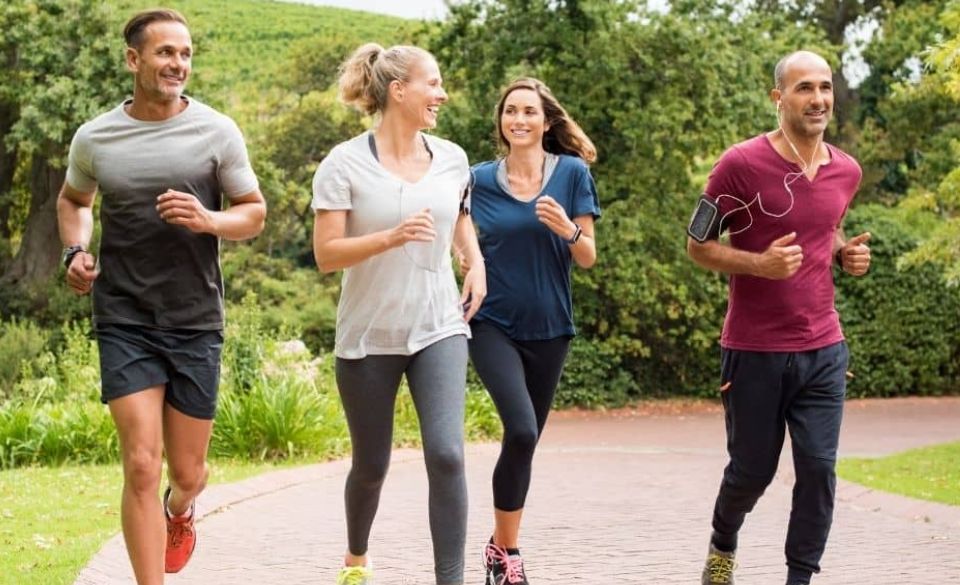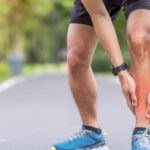
5 Glute Minimus Exercises You Should Do As A Runner
Running is a popular exercise that not only improves cardiovascular health but also improves mood. Running exercises every muscle in your body, from head to toe. Therefore, cross-training can improve your stride and prevent some ailments, just like strength training. Particularly in terms of glute training and especially the importance of glute minimus exercises.
Nearly everyone prioritizes having a tight, round, and powerful butt, whether for running or for
aesthetic reasons.
Although the muscle in the glute that is most frequently discussed and addressed is the gluteus maximus. Let’s not undervalue the gluteus minimus, the tiniest muscle in your butt.
The gluteus minimus is a crucial component of the gluteal muscles since it is essential for hip stability and hip abduction. These are both crucial for running and reason why runners should
perform glute minimus exercises.
This article will cover:
– Why Are Strong Glutes Important As A Runner?
– 5 Of The Best Glute Minimus Exercises
Why Are Strong Glutes Important As A Runner?
The strongest muscular group in the body is found in the glutes, notably the gluteus maximus.
As a result, it plays a crucial role in how you move and perform athletically. Weakness in this area can occasionally cause pain and injury, which can impair your running ability.
The gluteus maximus, gluteus medius, and gluteus minimus are three distinct muscles that
make up your glutes. Each plays a certain role.
For instance, the gluteus medius and minimus are both crucial for tight rotation and hip abduction, whereas the gluteus maximus is in charge of the hip joint’s extension.
This is why it is very important to not only focus on exercises that target the gluteus maximus but to also work on glute minimus exercises.
The force the glutes can generate and how we can use it to drive our run are both based on the
size and strength of the glutes.
Therefore, if we want to run faster, it is a good idea to spend some quality time developing powerful glutes. As the significance of stability grows as your speed rises, glute minimus exercises are increasingly important.
Additionally, having strong glutes can improve your running balance and help you avoid injuries.
For example, if your glutes and hamstrings are weak, your calves will often be uncomfortable as they try to compensate.
5 Of The Best Glute Minimus Exercises
Hip stability and hip abduction are the gluteus minimus’ primary duties. It works with your gluteus medius to assist you to rotate and shift your thighs to the side.
You just need to do glute minimus exercises and motions that directly involve the function of the muscle to activate your gluteus minimus to target them to make them stronger. This indicates that your gluteus minimus will be immediately trained and strengthened by activities that demand hip abduction, such as lateral lunges. The gluteus minimus will also be activated and engaged by single-leg workouts since the movement requires hip stability.
The majority of glute minimus exercises are really easy, so you can perform them almost anywhere. You can also make them harder or easier by adding resistance.
Side Plank with Hip Abduction
1. To perform the side plank with hip abduction:
2. Your lower leg and elbow should be on the ground as you are lying on your side.
3. By standing up on your bottom foot’s side and elbow, you may raise your body into a side plank.
4. Lift your top leg as high as you can while in this side bridge (plank) posture. Squeeze your side glutes and descend slowly.
5. Repeat ten to twelve times, then swap sides.
Your hips shouldn’t drop during the whole workout to maintain a straight torso.
Fire Hydrants
To Perform the fire hydrants:
1. Get down on your hands and knees, or on all fours. Your hands and knees should be in line with your shoulders and hips, respectively. Straight back.
2. As high as you can, lift your leg to the side while maintaining it bent. Your knee should ideally be approximately at the same level as your back.
3. Lower it back down till it almost touches the floor, then raise it again.
4. Repeat on the other side after performing this for 10 to 15 reps.
Using a loop resistance band will make this workout even more challenging.
Lateral Lunges
To perform the lateral lunge:
1. With you left leg step out to the side far enough to keep your right foot also the planted foot straight as you lower your self. Almost like doing a single leg squat with your left leg.
2. If you can, lower yourself until your thigh is parallel to the ground. If you can’t go that low,
come down to where you feel comfortable and work on getting deeper over time. This demands strong hip mobility.
3. Return to standing with your feet hip-width apart by pushing up with your left leg from the bottom position.
4. After performing 10 reps switch side to then perform an additional 10 repetitions on the other side.
Glute Bridges
To perform the glute bridge:
1. With your arms at your sides, lie on your back. With your feet firmly placed on the ground, bend your legs so that your heels are under your knee.
2. Your body should form a straight line from your knees to your upper chest as you lift your hips.
3. Hold the pose for 30 seconds while concentrating on tightening your core, hamstrings, and glutes to their fullest extent.
Lateral Walks with Bands
To perform the lateral walks with a band:
1. Simply loop a resistance band around your ankles or just above your knee if you have one; both positions are effective. The latex bands will work better around the ankle as they have less resistance, whilst the thicker fabric bands will work better above your knees as they have more resistance.
2. Put yourself in an athletic position by bending your knees just a little bit and lowering your butt somewhat.
3. Keeping everything tight, take a foot-long stride to the right with your right foot. Step with your left foot to the right, bringing your feet back to shoulder-width distance.
4. Repeat these steps right foot, left foot, for 5–10 reps, and then do the same on the other side.


